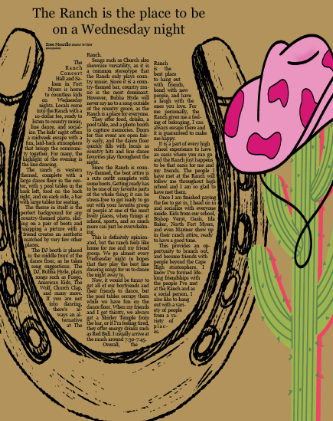Women deserve a larger role in the film industry
Women have historically struggled for recognition when it comes to something as basic as an occupation, especially in a male dominated field. Women in jobs such as directing, screenwriting, and producing have evolved overtime, as gender equality has improved over the course of several decades.
Movies and television is an art form that has never gone out of style, with stop motion animation starting in the 1890s, and film and television growing in popularity towards the 1950s.
People of all genders, ages, and backgrounds watching movies, it’s important to have representation for the viewers. For lack of better words, a woman’s ‘touch’ can add different and more relatable perspectives to a movie. Small choices while writing a character or filming a certain scene has the potential to change the entire connotation of a film.
The first Oscar for directing was presented in 1929. However, it wasn’t until 1977 when Italian filmmaker Lina Wertmuller was nominated for an Oscar, that a female director was even nominated for the award. Her film Seven Beauties, of 1975, was nominated for three other Academy Awards.
It took 81 years for the Academy to award a woman for best director. Katheryn Bigelow made history in 2010 for her movie Hurt Locker.
The first woman documented to direct films was in 1896, with Alice Guy in France. More than a decade later, Lois Weber became the first female American to start a directing career. Originally an actor, Weber went on to direct, screenwrite, and produce several movies throughout her lifetime.
Going forward a couple decades, women were starting to be seen in writing rooms and as producers, though still not nearly enough. No matter the time period, it isn’t uncommon to see directors have experience in acting before or during their time directing.
Ida Lupino acted in 58 films and directed eight. In 1949, Lupino was co-writing and producing the film, Not Wanted, when the original male director had health issues and was unable to continue. She stepped up for the role and directed the rest of the movie, though uncredited in the film.
The cinema industry is only as significant as the stories it produces. Little Women, written by Louisa May Scott in 1868, follows the now classic coming of age story of four sisters growing up from children to young adults. Two film adaptations were made, one in 1994 and one in 2019, both with female directors.
The importance of a woman’s story being executed by women is grave. The actor in a movie is simply an outlet, while the production team behind the movie creates the story and the specific light that they want the audience to see it in.
Ilene Chaiken, the executive director of The Handmaid’s Tale, from 2017 to present, had the job of directing the television adaptation and developing this dystopian, totalitarian society where women were treated as property and unwillingly used for reproductive purposes. Though haunting and uncomfortable to watch, this popular Hulu series brings to light social and political issues in the world.
According to the author of the book the show was based on, Margaret Atwood, The Handmaid’s Tale is meant to exemplify the fear women have of not having control over or a choice about their bodies. Were this series developed and directed by a man, the meaning of the show may not have been represented as effectively.
Many popular television shows today have had women undertake essential roles in their creation and success. As the 2000s come around, we start to see more normalcy in successful women in the film industry.
Grey’s Anatomy’s creator, executive producer, and original showrunner is Shonda Rhimes, who also created Netflix’s Inventing Anna, which became popular this year. And while less than half of Grey’s Anatomy’s directors are female, Rhimes showed the industry who’s boss by producing two decades of entertainment and several awards.
Mindy Kaling is another Hollywood name everybody should know. Most recognized for acting in the NBC comedy The Office, running from 2005 to 2013, Kaling was a writer, director, and executive producer throughout all nine seasons, on top of being a series regular.
With no break in between, Kaling then went on to create, executive produce, and star in The Mindy Project, which ran from 2012 to 2017, as well as co-creative and executive produce Netflix’s Never Have I Ever, which is currently in the making of its fourth season.
Many of these women have successful careers, who have had to work harder in their career to only make their names known and consistently be employed, but to earn similar wages to men that they deserve, as well. Hollywood seems glamorous and leisurely for many women, as they are idolized, but there is still a constant battle to earn their equal wage.
Film is no easy industry to get into, much less be successful in. Over the course of the past century, female directors and producers have fought to be recognized in a career they’re exceptional at. They’ve never failed to prove the success and entertainment of their films and television shows, the world has only failed to give them their rightful place in the industry.
Your donation will support the student journalists of Cape Coral High School. Your contribution will allow us to purchase equipment and cover our annual website hosting costs.








